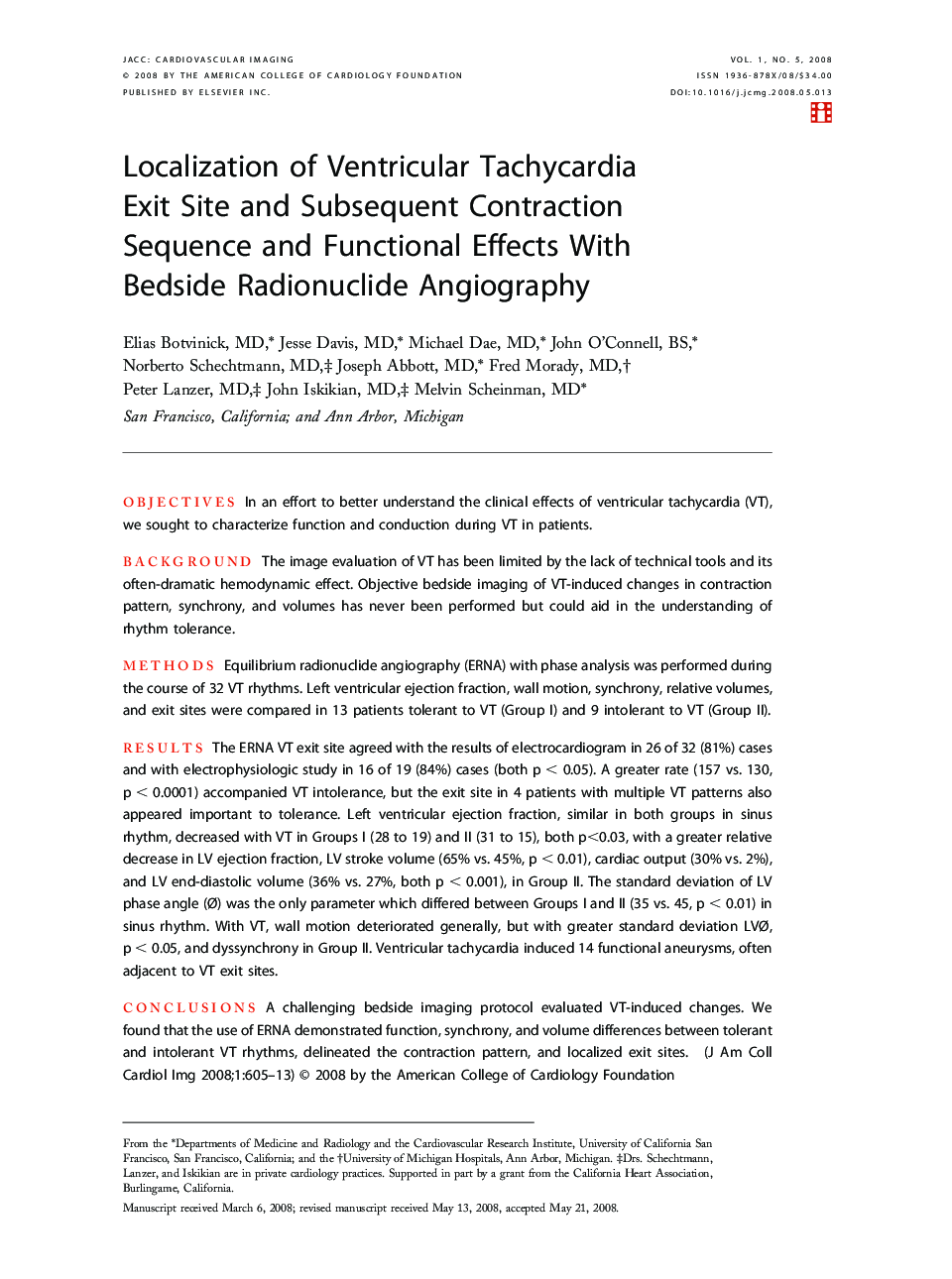| کد مقاله | کد نشریه | سال انتشار | مقاله انگلیسی | نسخه تمام متن |
|---|---|---|---|---|
| 2939381 | 1176985 | 2008 | 9 صفحه PDF | دانلود رایگان |

ObjectivesIn an effort to better understand the clinical effects of ventricular tachycardia (VT), we sought to characterize function and conduction during VT in patients.BackgroundThe image evaluation of VT has been limited by the lack of technical tools and its often-dramatic hemodynamic effect. Objective bedside imaging of VT-induced changes in contraction pattern, synchrony, and volumes has never been performed but could aid in the understanding of rhythm tolerance.MethodsEquilibrium radionuclide angiography (ERNA) with phase analysis was performed during the course of 32 VT rhythms. Left ventricular ejection fraction, wall motion, synchrony, relative volumes, and exit sites were compared in 13 patients tolerant to VT (Group I) and 9 intolerant to VT (Group II).ResultsThe ERNA VT exit site agreed with the results of electrocardiogram in 26 of 32 (81%) cases and with electrophysiologic study in 16 of 19 (84%) cases (both p < 0.05). A greater rate (157 vs. 130, p < 0.0001) accompanied VT intolerance, but the exit site in 4 patients with multiple VT patterns also appeared important to tolerance. Left ventricular ejection fraction, similar in both groups in sinus rhythm, decreased with VT in Groups I (28 to 19) and II (31 to 15), both p<0.03, with a greater relative decrease in LV ejection fraction, LV stroke volume (65% vs. 45%, p < 0.01), cardiac output (30% vs. 2%), and LV end-diastolic volume (36% vs. 27%, both p < 0.001), in Group II. The standard deviation of LV phase angle (Ø) was the only parameter which differed between Groups I and II (35 vs. 45, p < 0.01) in sinus rhythm. With VT, wall motion deteriorated generally, but with greater standard deviation LVØ, p < 0.05, and dyssynchrony in Group II. Ventricular tachycardia induced 14 functional aneurysms, often adjacent to VT exit sites.ConclusionsA challenging bedside imaging protocol evaluated VT-induced changes. We found that the use of ERNA demonstrated function, synchrony, and volume differences between tolerant and intolerant VT rhythms, delineated the contraction pattern, and localized exit sites.
Journal: JACC: Cardiovascular Imaging - Volume 1, Issue 5, September 2008, Pages 605–613